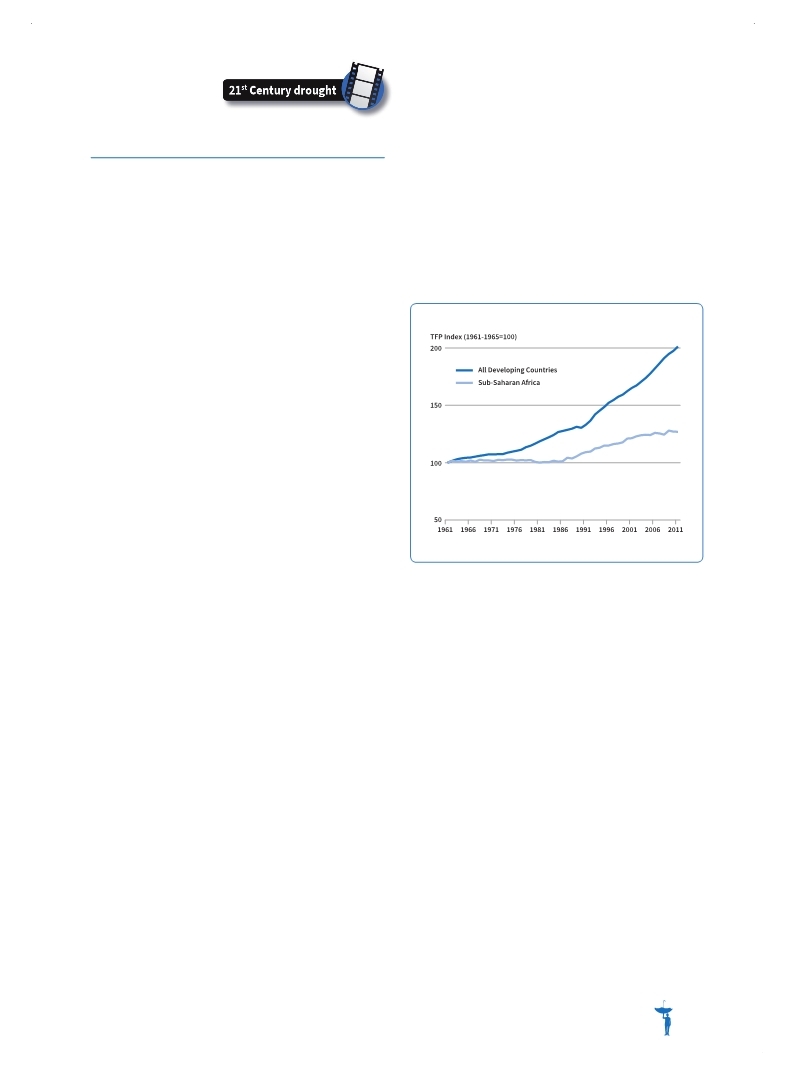 |
Global Assessment Report on Disaster Risk Reduction 2015
Making development sustainable: The future of disaster risk management |
 |
Global Assessment Report on Disaster Risk Reduction 2015
Making development sustainable: The future of disaster risk management |
|
|

83
3.7 Agricultural drought risk
In several countries, losses from agricultural drought not only pose risks to the national economy but can also lead to devastating effects on the rural population. With climate change, patterns of agricultural drought can be expected to change.
Agricultural drought is probably the most socially constructed of all disaster risks (UNISDR, 2011a
UNISDR. 2011a,Global Assessment Report on Disaster Risk Reduction: Revealing Risk, Redefining Development, Geneva, Switzerland: UNISDR.. . The direct impacts of agricultural drought are reduced crop, rangeland and forest productivity, reduced water levels, increased fire hazard, damage to wildlife and fish habitats, and increased livestock and wildlife mortality. The indirect impacts include reduced income from agriculture and increased food and timber prices, which in turn lead to wider impacts such as malnutrition (especially among children), increased unemployment, migration, reduced tax revenues and the risk of foreclosures on bank loans to farmers. Although agricultural droughts can persist for several years, even a short, intense drought can cause significant damage to the local economy (FAO, 2013a
FAO (Food and Agriculture Organization). 2013a,Drought, FAO Land & Water.. . In sub-Saharan Africa, only 1 per cent of the farmed area is irrigated (Ward et al., 2014
Ward, Christopher, Claudia Ringler, Raphael Torquebiau and Tom Watson. 2014,Improving resilience in SSA drylands: the contribution of agricultural water management. .  Erian et al., 2014 Erian et al., 2014 Erian, Wadid, Bassem Katlan, Naji Assad and Sanaa Ibrahim. 2014,Effects of Drought and Land Degradation on Crop Losses in Africa and the Arab Region with Special Case Study on: drought and conflict in Syria, Background Paper prepared for the 2015 Global Assessment Report on Disaster Risk Reduction. Geneva, Switzerland: UNISDR.. Erian, Wadid, Bassem Katlan, Naji Assad and Sanaa Ibrahim. 2014,Effects of Drought and Land Degradation on Crop Losses in Africa and the Arab Region with Special Case Study on: drought and conflict in Syria, Background Paper prepared for the 2015 Global Assessment Report on Disaster Risk Reduction. Geneva, Switzerland: UNISDR.. Click here to view this GAR paper. Figure 3.33 Total factor productivity (TFP) index
(Source: USDA Economic Research Service.)
In many low-income countries in this region, agriculture remains a critical economic sector. In many of those countries where economic activity and employment are concentrated in agriculture, such as Eritrea and Ethiopia, a significant proportion of the population is undernourished, and a significant proportion of the area covered by vegetation is affected by high levels of land degradation and agricultural drought hazard (Table 3.2).
In these countries, agricultural drought not only poses risks to the national economy but also leads to devastating effects on the rural population.
In Malawi, for example, agriculture is responsible for around 30 per cent of GDP. Estimated annual losses due to drought represent about 1 per cent
|
 
Page 1Page 10Page 20Page 30Page 40Page 50Page 60Page 70Page 73Page 74Page 75Page 76Page 77Page 78Page 79Page 80Page 81Page 82Page 83Page 84->Page 85Page 86Page 87Page 88Page 89Page 90Page 91Page 92Page 93Page 94Page 95Page 96Page 97Page 100Page 110Page 120Page 130Page 140Page 150Page 160Page 170Page 180Page 190Page 200Page 210Page 220Page 230Page 240Page 250Page 260Page 270Page 280Page 290Page 300Page 310
|
|
 
|
 
|
